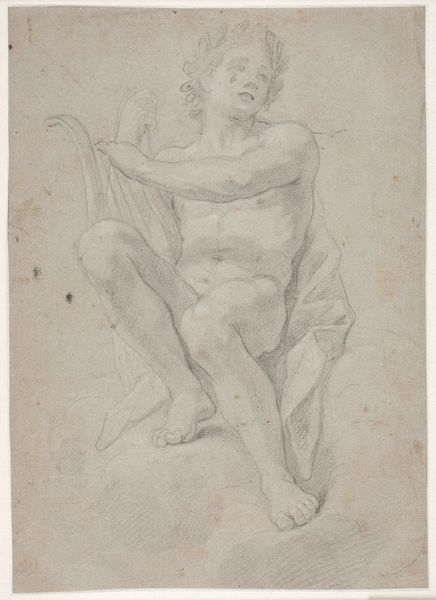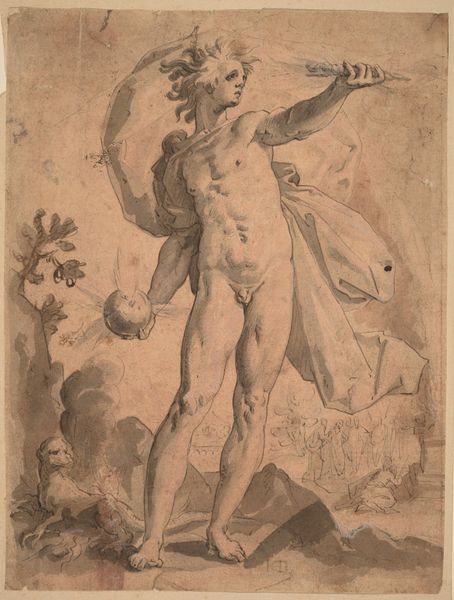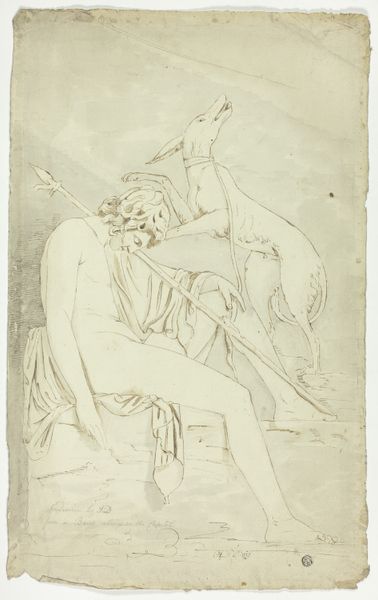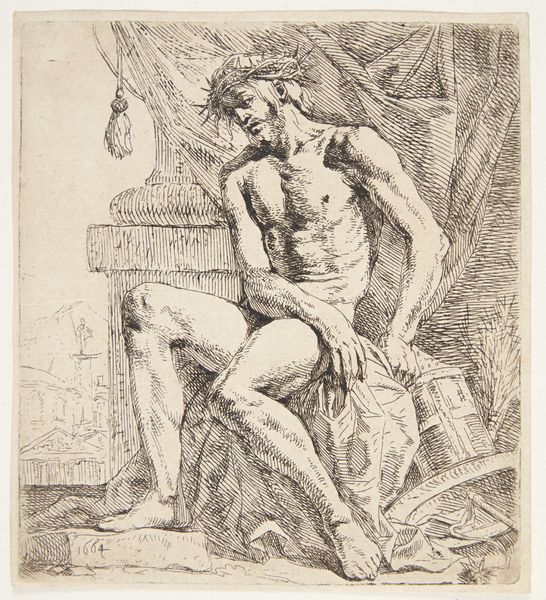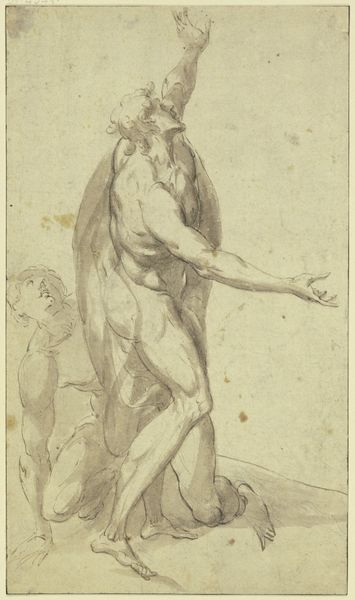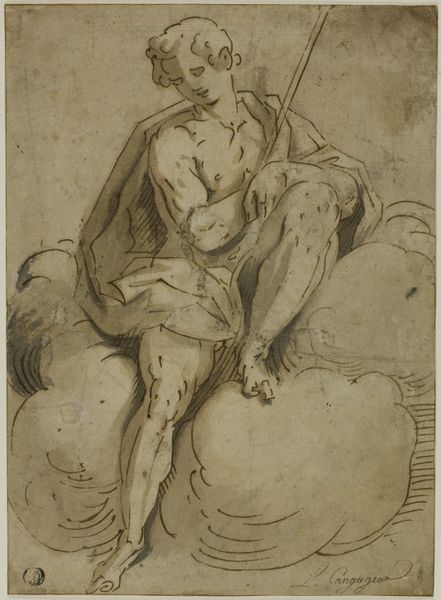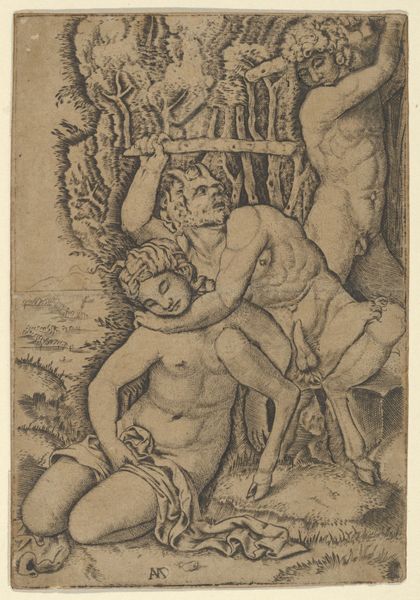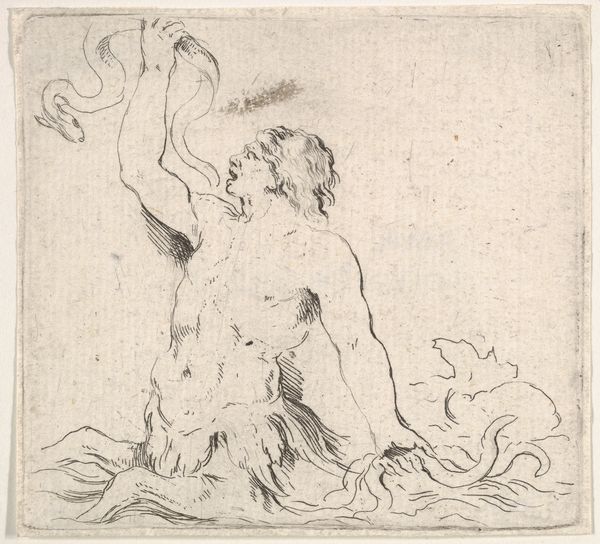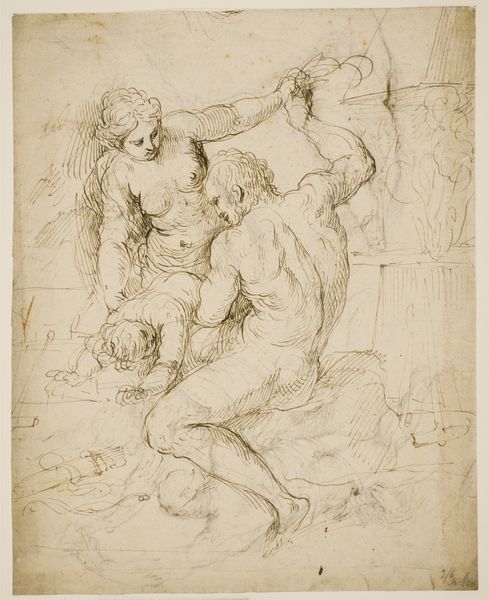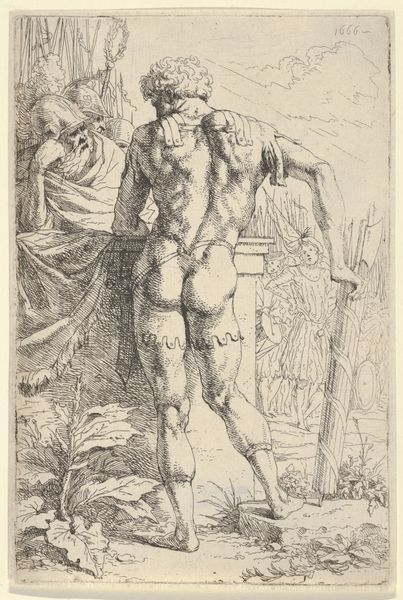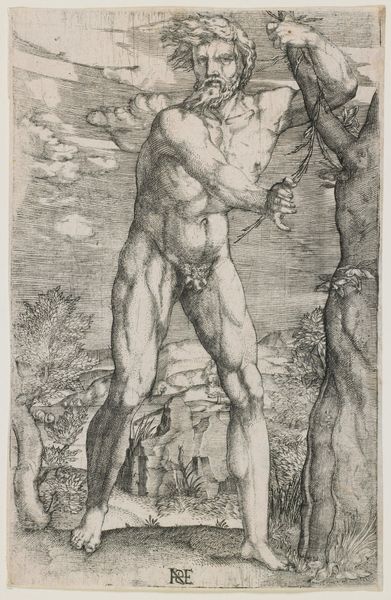
print, engraving
#
portrait
# print
#
figuration
#
line
#
portrait drawing
#
italian-renaissance
#
nude
#
engraving
Dimensions: sheet (trimmed close to plate mark): 16.4 x 14.8 cm (6 7/16 x 5 13/16 in.)
Copyright: National Gallery of Art: CC0 1.0
Giovanni Antonio da Brescia created this engraving, "Man Seated Holding a Forked Staff," in Italy during the early 16th century. It depicts a nude male figure, perhaps a classical god or philosopher, seated and holding a staff. The image draws heavily from classical antiquity, reflecting the Renaissance interest in rediscovering and reinterpreting Greek and Roman culture. Nudity was common in classical sculpture, and the figure's idealized physique and the staff he holds evokes authority and wisdom. Brescia was both a printmaker and a goldsmith, and may have been familiar with the work of artists such as Marcantonio Raimondi, who made prints after Raphael, a leading artist in Rome. To fully understand this print, one might research the role of classical imagery in Renaissance art, the status of goldsmiths, and the development of printmaking as a new medium for disseminating images and ideas. What was the relationship between printed images and power in the 16th century? It is through such questions that art history connects the artwork to its wider world.
Comments
No comments
Be the first to comment and join the conversation on the ultimate creative platform.
